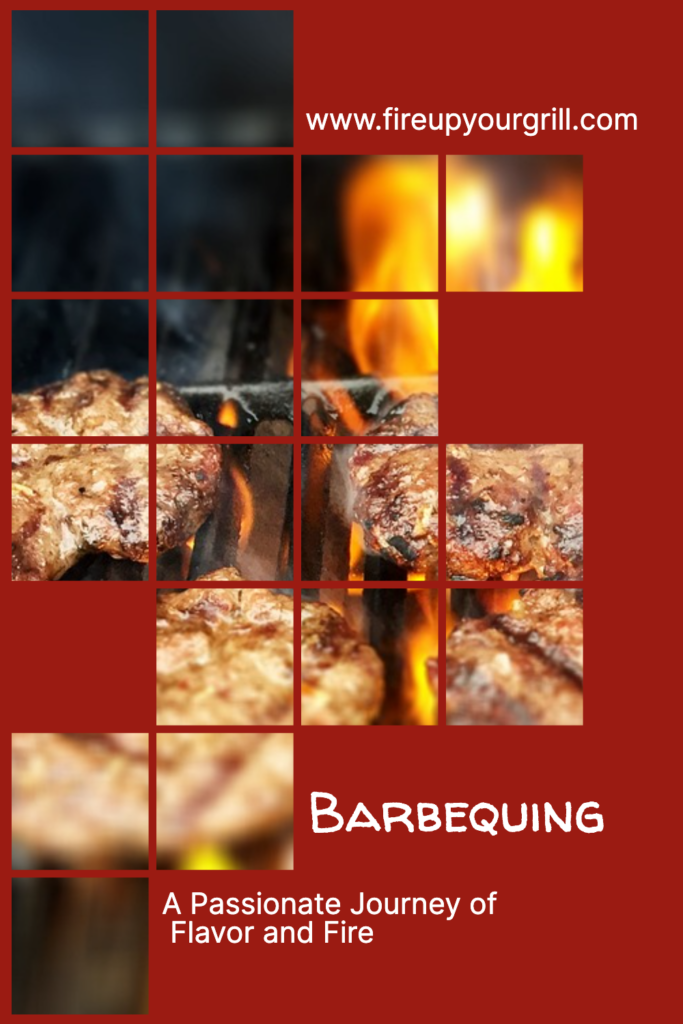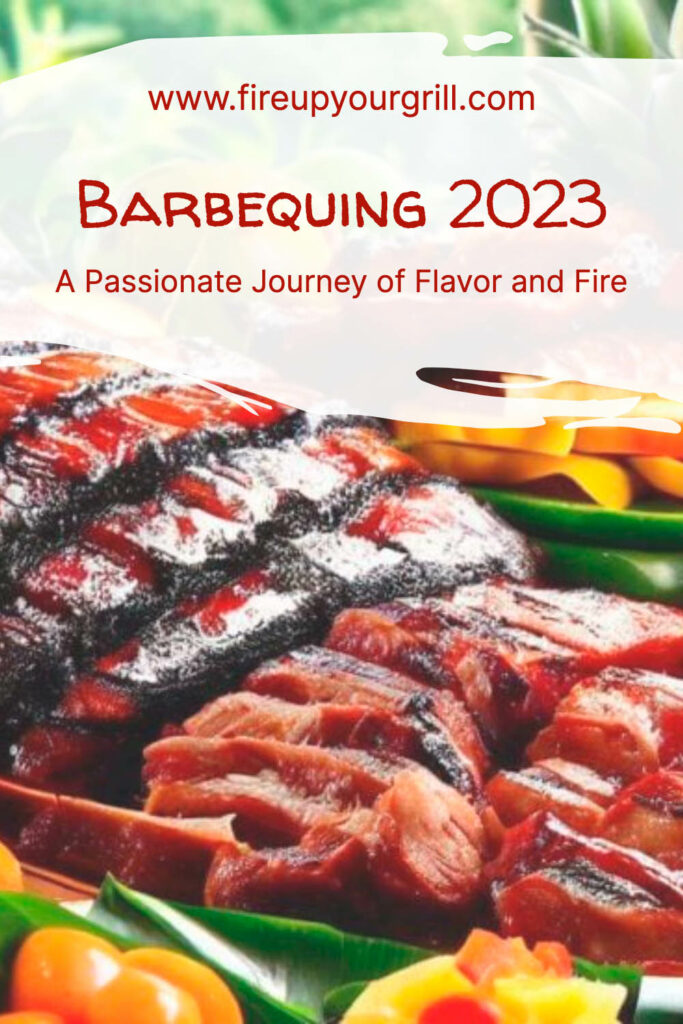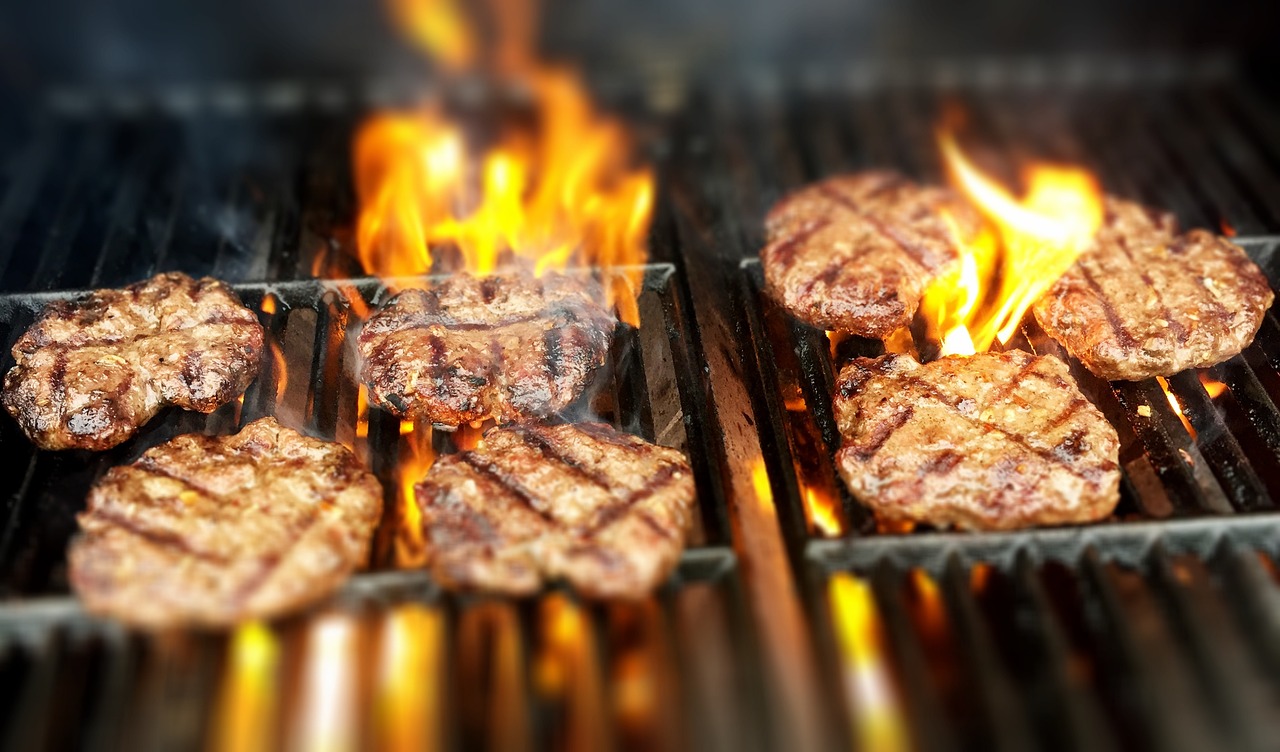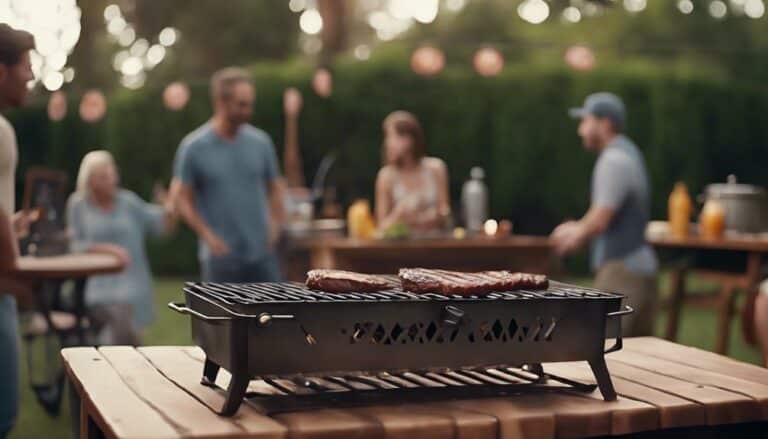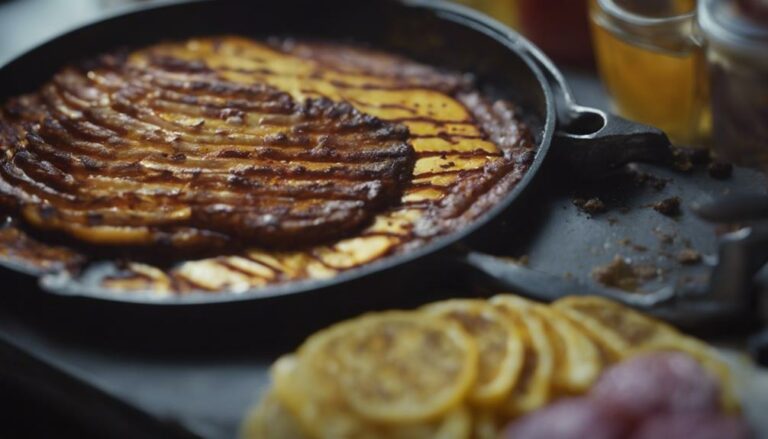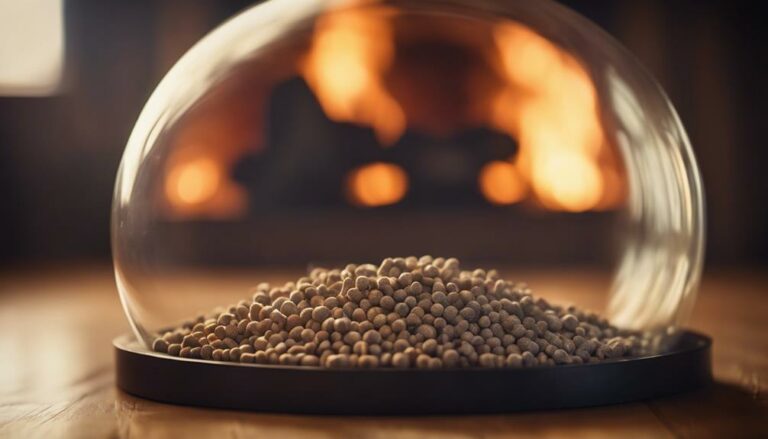Table of Contents
Barbequing is a method of cooking food over an open fire, usually using charcoal or gas as fuel. It is a popular way of enjoying outdoor dining with family and friends, especially in the summer months. Barbequing can create delicious flavors and aromas, as well as tender and juicy textures, for a variety of foods, such as meat, fish, vegetables, fruits, cheese, and bread.
Introduction
But barbequing is not just about throwing some burgers and sausages on the grill. It is an art and a skill that requires some preparation, patience, and creativity. In this article, we will share with you some tips and tricks on how to barbecue like a pro, from choosing the right equipment and preparing your food to barbecuing safely and successfully, and adding flavor and variety to your menu. Whether you are a beginner or an expert, we hope you will find something useful and inspiring in this guide.
My Passion for Barbequing
Barbequing has always been a passion of mine. There’s something primal and captivating about standing before a sizzling grill, surrounded by the aromas of seasoned meats and the crackling sound of flames. The ability to transform raw ingredients into delicious masterpieces using fire and smoke is both rewarding and fulfilling.
Importance of Barbequing Skills
Mastering the art of barbequing goes beyond impressing your friends and family at cookouts. It’s about honing your culinary skills, expanding your flavor palette, and embracing a versatile cooking technique. Whether you’re a seasoned griller or just starting, developing your barbequing skills will elevate your cooking prowess and unlock a world of delectable possibilities.
How to Spell Barbecuing Correctly: Barbecuing or Barbequing?
You may have noticed that there are different ways to spell the word barbequing, such as barbecue, barbeque, BBQ, etc. Which one is correct? Well, it depends on who you ask and where you are. The word barbequing comes from the Spanish word barbacoa, which means a method of cooking meat over an open fire. The standard modern English spelling of the word is barbecue, which is the one that most dictionaries and edited writing use. However, some people prefer to use the variant spelling barbeque, which may have been influenced by the French phrase barbe à queue, meaning whiskers to tail. The abbreviation BBQ is also widely used, especially in informal contexts and in the names of restaurants and products. In some countries, such as Australia and South Africa, there are other terms for barbequing, such as barbie and braai. Ultimately, there is no definitive answer to how to spell barbequing correctly, as long as you are consistent and clear in your communication.
How to Choose the Right Barbequing Equipment
The first thing you need to consider when you want to barbecue is what kind of equipment you will use. There are many types of barbecues available on the market, but they can be broadly divided into two categories: charcoal and gas.
Charcoal vs Gas Barbecues: Pros and Cons
Charcoal barbecues are the traditional choice for many barbecuers, as they produce a more authentic smoky flavor and a higher temperature than gas barbecues. They are also cheaper to buy and more portable than gas barbecues. However, charcoal barbecues have some drawbacks as well. They take longer to light and heat up, they are harder to control the temperature, they produce more smoke and ash, they require more cleaning and maintenance, and they are less environmentally friendly than gas barbecues.
Gas barbecues are more convenient and easy to use than charcoal barbecues. They light up quickly and evenly, they have knobs or buttons that allow you to adjust the temperature precisely, they produce less smoke and ash, they are easier to clean and maintain, and they are more eco-friendly than charcoal barbecues. However, gas barbecues have some disadvantages as well. They are more expensive to buy and operate than charcoal barbecues, they need a gas tank or a connection to a gas line, they are less portable than charcoal barbecues, and they produce a less intense smoky flavor than charcoal barbecues.
Ultimately, the choice between charcoal and gas barbecues depends on your personal preference, budget, space, and availability of fuel. You can also opt for a hybrid barbecue that combines both charcoal and gas features.
The Importance of a Lid and a Thermometer
Another thing you need to look for when choosing a barbecue is whether it has a lid or not. A lid is essential for creating a consistent temperature inside the barbecue, locking in the flavor and moisture of your food, preventing flare-ups from dripping fat or oil, smoking your food with wood chips or herbs, melting cheese on burgers or pizzas, roasting whole chickens or turkeys, baking breads or cakes, etc. Without a lid, you will miss out on many barbecue possibilities.
A thermometer is also important for measuring the temperature of your barbecue and your food. A thermometer can help you avoid undercooking or overcooking your food, which can affect the taste, texture, and safety of your food. A thermometer can also help you control the heat of your fire by telling you when to add more fuel or adjust the vents or knobs. There are different types of thermometers available for barbecuing, such as oven thermometers that measure the temperature inside the barbecue chamber, grill thermometers that measure the temperature at the surface of the grill, meat thermometers that measure the internal temperature of your meat, infrared thermometers that measure the temperature without touching your food, etc.
Other Essential Tools and Accessories
Besides a barbecue, a lid, and a thermometer, there are some other tools and accessories that can make your barbecuing experience easier and more enjoyable. Here are some examples:
- Tongs: Tongs are useful for flipping and moving your food without piercing it or losing juices.
- Spatula: A spatula is handy for lifting and sliding your food without breaking it or sticking it.
- Fork: A fork is helpful for piercing and testing your food for doneness or tenderness.
- Brush: A brush is convenient for applying or basting your food with sauces, marinades, or oil.
- Skewers: Skewers are great for making kebabs or grilling fruits or vegetables.
- Grill basket: A grill basket is ideal for cooking small or delicate foods that might fall through the grill grates, such as fish, shrimp, mushrooms, etc.
- Grill mat: A grill mat is useful for preventing your food from sticking or burning on the grill, as well as keeping your grill clean.
- Grill gloves: Grill gloves are necessary for protecting your hands from burns or cuts when handling hot or sharp objects on the grill.
- Apron: An apron is advisable for keeping your clothes clean or safe from splashes or sparks on the grill.
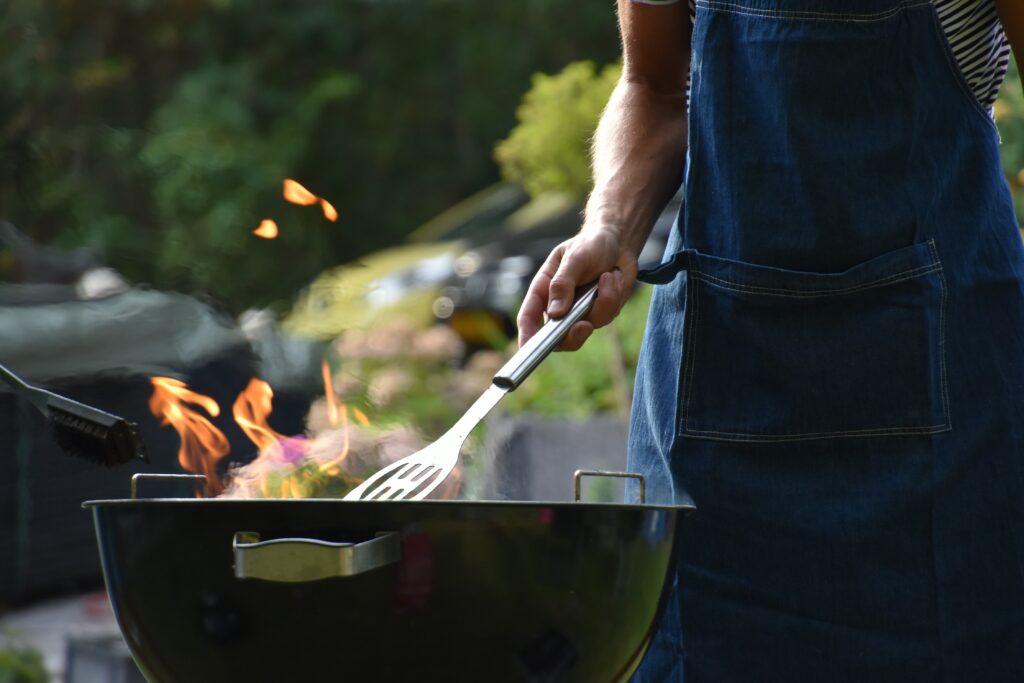
Cooking Techniques
Different cooking techniques offer unique flavors and textures. Let’s explore the two primary methods used in barbequing.
Direct vs. Indirect Grilling
- Direct Grilling: Ideal for thin cuts of meat or quick-cooking foods like burgers and hot dogs, direct grilling involves placing the food directly over the heat source.
- Indirect Grilling: Perfect for larger cuts or delicate items that require slower cooking, indirect grilling involves placing the food to the side of the heat source. This method allows for gentle, uniform cooking and prevents excessive charring.
Smoking and Slow Cooking
Smoking is a popular technique for infusing robust smoky flavors into your meats. Whether using a dedicated smoker or setting up your grill for smoking, low and slow cooking over indirect heat allows the flavors to develop gradually, resulting in tender, flavorful barbeque.
Temperature Control
Maintaining proper temperature control is vital for achieving perfectly cooked meats. Here are a couple of key aspects to consider:
Understanding Heat Zones
Divide your grill into different heat zones, including high, medium, and low. This allows you to sear your meats over high heat and then move them to a cooler zone to finish cooking gently. Understanding heat zones ensures consistent results and prevents overcooking.
Using Thermometers
Investing in a reliable meat thermometer is a game-changer for barbequing. Instant-read thermometers allow you to monitor the internal temperature of your meats accurately, ensuring they reach the desired level of doneness without guesswork.
Flavor Enhancements
To take your barbeque to the next level, explore various flavor enhancements that complement your meats.
Wood Chips and Chunks
Adding wood chips or chunks to your grill or smoker can infuse tantalizing smoky flavors into your barbeque creations. Experiment with different types of wood, such as hickory, mesquite, or applewood, to achieve diverse flavor profiles.
Barbeque Sauces and Rubs
Sauces and rubs act as flavor boosters and can be applied before, during, or after grilling. Explore a range of homemade or store-bought sauces and rubs to find the perfect balance of sweetness, tanginess, and heat for your barbeque creations.
Grilling Tips
Achieving perfectly grilled meats requires attention to detail and adherence to some tried-and-true techniques. Here are a few tips to enhance your grilling skills:
Proper Grilling Times and Temperatures
Different cuts of meat require specific cooking times and temperatures for optimal results. Use a grilling guide or consult reliable resources to ensure your meats are cooked to perfection.
Resting and Carving
After grilling, allow your meats to rest for a few minutes before carving. This allows the juices to redistribute, resulting in tender and moist barbeque. Use a sharp knife to carve the meat against the grain, ensuring optimal tenderness.
Vegetarian Options
Barbequing isn’t just limited to meat lovers. There are plenty of delicious options for vegetarians and those looking to explore plant-based alternatives.
Grilling Vegetables and Fruits
Grilled vegetables and fruits offer a delightful array of flavors and textures. From charred bell peppers and zucchini to caramelized peaches and pineapple, grilling brings out the natural sweetness and adds a smoky twist to these ingredients.
Plant-Based Protein Alternatives
For those seeking plant-based protein options, the market offers a wide range of meat substitutes specifically designed for grilling. Explore options like tofu, tempeh, seitan, or plant-based burgers and sausages for a satisfying barbeque experience.
How to Prepare Your Food for Barbequing
Once you have chosen your barbecue equipment, you need to prepare your food for barbequing. This involves marinating, seasoning, cutting, and skewering your food.
How to Marinate and Season Your Meat and Vegetables
Marinating and seasoning your meat and vegetables can enhance their flavor, tenderness, and juiciness, as well as prevent them from drying out or burning on the grill. You can use ready-made sauces, dressings, or rubs, or make your own with ingredients such as oil, vinegar, lemon juice, soy sauce, honey, mustard, garlic, herbs, spices, etc.
To marinate your food, you need to place it in a ziplock bag, a bowl, or a baking dish, and pour over enough marinade to coat it well. Then you need to refrigerate it for at least 30 minutes or up to overnight, depending on the type and thickness of your food. You should turn your food occasionally to ensure even marinating.
To season your food, you need to sprinkle it with salt, pepper, and other seasonings of your choice just before grilling it. You should not season your food too early, as salt can draw out moisture from your food and make it dry.
How to Cut and Skewer Your Food for Even Cooking
Cutting and skewering your food can help it cook faster and more evenly on the grill. You should cut your food into similar-sized pieces so that they cook at the same rate. You should also cut across the grain of your meat to make it more tender.
Skewering your food can make it easier to flip and move on the grill, as well as create attractive patterns and combinations of colors and flavors. You can use metal skewers, which are reusable and conduct heat well, or wooden skewers, which are disposable and add some smoky flavor. If you use wooden skewers, you should soak them in water for at least 20 minutes before using them to prevent them from burning on the grill.
To skewer your food, you need to thread it on the skewer, leaving some space between each piece to allow the heat to circulate. You can alternate different types of food on the same skewer, such as meat and vegetables, or create separate skewers for each type of food. You should also trim off any excess fat or skin from your food to prevent flare-ups and charring.
How to Avoid Cross-Contamination and Food Poisoning
Barbecuing can pose risks of cross-contamination and food poisoning if you are not careful with handling raw and cooked food. Here are some tips to avoid these problems:
- Wash your hands before and after touching raw food. Use separate utensils and plates for raw and cooked food.
- Keep raw food in the fridge until you are ready to grill it. Avoid leaving it out in the sun or at room temperature for too long.
- Do not reuse marinade that has been in contact with raw food unless you boil it first to kill any bacteria.
- Cook your food thoroughly, especially poultry, pork, and minced meat. Ensure there is no pink or red color in the center, and the juices run clear. Use a thermometer to check the internal temperature of your food and follow these guidelines:
- Poultry: 165°F (74°C)
- Minced meat: 160°F (71°C)
- Whole cuts of meat: 145°F (63°C)
- Fish and seafood: 145°F (63°C)
- Vegetables and fruits: 135°F (57°C)
- Avoid leaving cooked food on the grill or at room temperature for too long, as it can spoil or grow bacteria. Keep it warm in a covered container or oven until you are ready to serve it. Alternatively, refrigerate it within two hours of cooking.
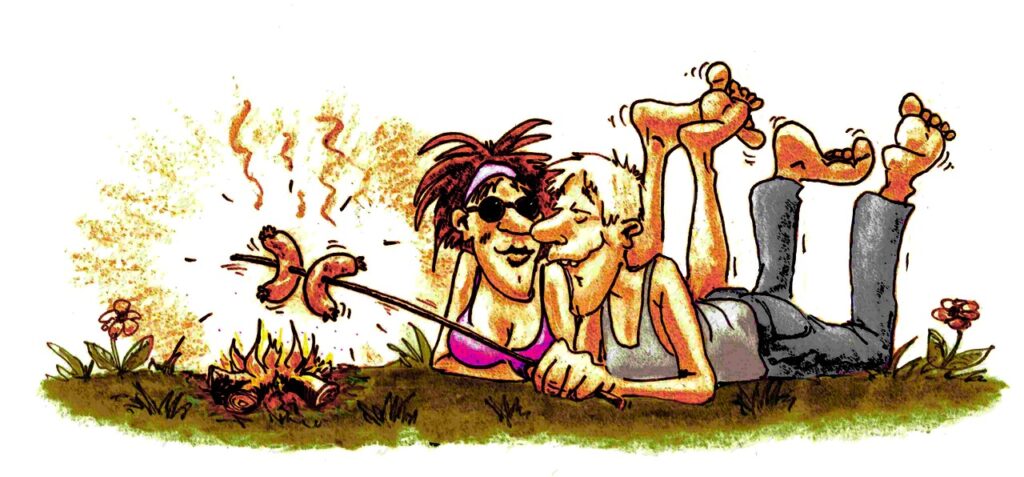
How to Barbequing Safely and Successfully
Now that you have prepared your barbecue equipment and food, you are ready to start grilling. Here are some tips to help you barbecue safely and achieve the best results:
How to Light and Control Your Fire
If you are using a charcoal barbecue:
- Light your fire about 30 minutes before cooking. You can use a chimney starter or pile charcoal in a pyramid shape and light it with newspaper or firelighters.
- Spread the lit charcoal evenly on the bottom of the barbecue, leaving gaps for airflow.
- Create different heat zones by piling more charcoal on one side for variable cooking temperatures.
If you are using a gas barbecue:
- Check your gas tank or connection for leaks or cracks. Ensure the gas is turned on fully.
- Turn on one burner at a time and ignite it with a long match or lighter.
- Adjust the knobs or buttons to set the desired temperature for each burner.
How to Test the Temperature and Doneness of Your Food
To test the temperature:
- Use a thermometer for accurate readings.
- Alternatively, use the hand test: hold your hand about 5 inches above the grill and count how long you can hold it there comfortably.
To test the doneness:
- Use a thermometer for accurate internal temperature readings.
- Use a fork to check color and juices: no pink color or clear juices for poultry, minced meat, fish, and seafood.
How to Flip and Move Your Food Without Losing Juices
- Use tongs or a spatula instead of a fork to flip and move your food.
- Minimize flipping and moving to retain juices and flavor. Flip food once unless creating crosshatch marks. Move only when necessary to avoid flare-ups or hot spots.
How to Add Flavor and Variety to Your Barbecue Menu
Barbequing can be fun and delicious, but it can become boring if you always cook the same foods in the same ways. Here are some tips to add flavor and variety to your barbecue menu:
- Use Different Types of Wood Chips for Smoking
- Use wood chips to add smoky flavor and aroma to your food.
- Select specific wood chips for different types of food (e.g., hickory for pork or beef, apple or cherry for poultry or fish).
- Soak half the wood chips in water for 30 minutes, leave the other half dry. Wrap them in a foil pouch with added herbs or spices.
- Place the pouch on the charcoal or under the grate on a gas barbecue. Replace when smoke diminishes or when changing flavors.
- Make Your Own Sauces, Dressings, and Rubs
- Enhance flavor and moisture with sauces, dressings, and rubs.
- Use ready-made or create your own using ingredients like oil, vinegar, lemon juice, soy sauce, honey, mustard, garlic, herbs, and spices.
- Apply sauces during or after grilling, drizzle dressings before or after grilling, and rubs before grilling.
- Try Different Cuisines and Recipes on the Barbecue
- Expand your barbecue repertoire with various cuisines and recipes.
- Experiment with Mediterranean kebabs, Mexican fajitas, Indian tikka skewers, Chinese char siu ribs, Japanese yakitori chicken, and more.
- Explore grilling cheese, pizza, bread, cake, fruit, and other unique options.
- Find inspiration from online recipes or books to try something new and exciting.
By following these guidelines, you can ensure safe and enjoyable barbecuing while exploring diverse flavors and techniques.
Conclusion: Enjoy Your Barbecue Experience
Barbequing is a fun and delicious way to cook outdoors with family and friends. But it also requires some preparation, patience and creativity to achieve the best results. In this article, we have shared with you some tips and tricks on how to barbecue like a pro, from choosing the right equipment and preparing your food, to barbecuing safely and successfully, to adding flavour and variety to your menu. We hope you have learned something useful and inspiring from this guide, and that you will enjoy your barbecue experience.
FAQ
How do I prevent my food from sticking to the grill?
You can prevent your food from sticking to the grill by cleaning the grill before and after each use, oiling the grill or your food lightly before grilling, and letting your food cook undisturbed until it releases easily from the grill.
How do I prevent flare-ups on the grill?
You can prevent flare-ups on the grill by trimming off excess fat or skin from your food, using a drip pan or a foil pouch to catch the drippings, moving your food away from the flames or reducing the heat if a flare-up occurs, and keeping a spray bottle of water handy to extinguish any flames.
How do I keep my food moist and juicy on the grill?
You can keep your food moist and juicy on the grill by marinating or seasoning your food before grilling, using a lid to trap the moisture and heat inside the barbecue, flipping and moving your food as little as possible, and resting your food for a few minutes after grilling.
How do I know when my food is done on the grill?
You can know when your food is done on the grill by using a thermometer to check the internal temperature of your food, or by piercing your food with a fork and checking its colour or juices. You can also follow these guidelines: 165°F (74°C) for poultry; 160°F (71°C) for minced meat; 145°F (63°C) for whole cuts of meat; 145°F (63°C) for fish and seafood; 135°F (57°C) for vegetables and fruits.
How do I clean my grill after barbequing?
You can clean your grill after barbequing by scraping off any residue with a wire brush or a spatula while the grill is still hot, wiping it with a damp cloth or paper towel, and applying some oil to prevent rusting. You can also soak your grill grates in hot soapy water or vinegar for easier cleaning. For gas grills, you should also check and clean the burners, valves and hoses regularly.
